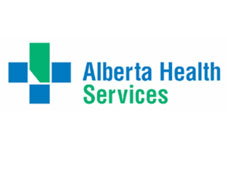- News Front Page
- Uncategorized
- Headline News
- Filipino Calgarian
- Business
- Pinoy Stories
- Community News
- Publisher's Note
- The Main Ingredient
- Views and Opinions
- Maikling Kwento
- Alberta News
- OFW – Month
- Travel News
- Health and Lifestyle
- Pinoy Toons
- Pinoy Spirit
- Entertainment
- The Philippine Lawyer
- Horoscope
- Greetings
- About Us
- Greetings From the Prime Minister
- Greetings from the President of the Philippines
- Greetings from the Premier of Alberta
- Greetings from the Mayor of Calgary
- Advertise With Us
- Disclaimer
- Subscription
Publisher's Note
- Publisher’s Note
 by CK
May is the month of flowers not just in the Philippines but also here in Calgary. A lot of my neighbors have done their spring cleaning and unfortunately I cannot cope up with them. I remember that during this time of the year my husband, Hank gets busier day by day. He takes care [...]
by CK
May is the month of flowers not just in the Philippines but also here in Calgary. A lot of my neighbors have done their spring cleaning and unfortunately I cannot cope up with them. I remember that during this time of the year my husband, Hank gets busier day by day. He takes care [...]
Visitors to Pinoytimes
Page added on July 18, 2010
VITAMIN D – THE SUNSHINE VITAMIN

What is vitamin D?
Vitamin D is a nutrient that helps our bodies use calcium and phosphorous to build and maintain strong bones and teeth. Vitamin D deficiency has been linked to diseases such as fibromyalgia, multiple sclerosis, certain types of cancer, Crohn’s disease, and ulcerative colitis.
Why is vitamin D important?
Vitamin D deficiency can cause rickets in children, and osteomalacia (softening of the bones) and osteoporosis (fragile bones) in adults. Vitamin D is also needed by many other parts of the body, including muscles, nerves, skin, glands, and the immune system.
Why is it called the “sunshine vitamin”?
Vitamin D is known as the sunshine vitamin because our bodies can make vitamin D from the sun. When sunlight hits our skin, the ultra-violet B (UVB) sun rays are used to make vitamin D.
Can I meet my vitamin D needs from sunlight?
Sunlight on our skin is a major source of vitamin D; however, it is not possible to safely get all the vitamin D we need from the sun. The reasons for this include:
- Time of year: during the winter months (October to March) northern parts of the world, such as Alberta, lack the UVB rays needed to make vitamin D.
- Skin colour: people with dark skin do not make vitamin D as efficiently as light-skinned people. Sunlight is not a good source of vitamin D for people with dark skin.
- Sunscreen: exposing our skin to sun increases our risk of skin cancer. Using sunscreens to prevent skin cancer also blocks out the UVB rays needed to make vitamin D.
How much vitamin D do we need?
Current vitamin D recommendations are listed below.
| Age | Minimum Daily Vitamin D (IU/day)& | Daily safe upper limit vitamin D (IU/day) |
| Birth to 12 months | See section “What about vitamin D supplements?” | 1000 |
| 1 to 50 years | 200 | 2000 |
| 51 to 70 years | 400 | 2000 |
| 71 years and over | 600 | 2000 |
| Pregnant and breastfeeding women | 200 | 2000 |
* 40 International Units (IU)= 1 microgram (ug) of vitamin D
Source: Dietary Reference Intakes, National Academy of Sciences (2001)
Note: For children under one year, the safe upper limit of vitamin D is 1000 IU. It is 2000 IU for everyone else. See “ Can I get too much vitamin D?”
Getting enough vitamin D
Including good food sources of vitamin D in your diet will help you get the vitamin D your body needs. Fortified foods (foods with vitamin D added to them) are common sources of vitamin D. In Canada, milk, margarine, and infant formula are fortified with vitamin D. Fish and eggs are other good sources of vitamin D. Listed below are common sources of vitamin D:
Food |
IUs |
| Fortified soy beverage* 250 mL (1 cup)
Infant formula 80 mL(1/3 cup) Margarine 5 mL (1 tsp) Milk 250 mL (1cup) Fish: Mackerel 90 g (3 oz) Salmon, canned 90g (3 oz) Sardines, 1 can 100g (3.75 oz) Tuna 90g (3 oz) |
120
20-60 60 100 310 650 250 236 |
* Soy beverages do not have to be fortified with vitamin D. Read the label to see if vitamin D has been added.
Source: USDA National Nutrient Database for Standard Reference, Release 18 (2005)
What about vitamin D supplements?
Babies: Health Canada recommends that all breasfed, healthy, term babies in Canada receive a daily vitamin D supplement of 400 IU. This is to reduce the risk of rickets, a disease that can affect bone growth in children. Vitamin D supplements should begin at birth. Supplements should continue until the baby’s diet includes at least 400 IU of vitamin D from food sources or until the breastfed baby reaches one year of age. Formula-fed babies do not usually need a vitamin D supplement because commercial infant formulas are fortified with vitamin D.
Adults over 50 years: Aging causes skin to lose some of its ability to make vitamin D from the UVB rays. Also, as our bodies age, we are less able to absorb vitamin D from the food we eat. Because of this, adults over 50 have a higher need for vitamin D.
People with limited food choices: People who do not drink milk or eat fish may not meet their minimum daily needs for vitamin D.
Adults over 50 and people with limited food choices should:
- Carefully plan all meals and snacks to include good food sources of vitamin D
- Consider taking avitamin D supplement or multi-vitamin supplement if unable to get enough vitamin D from food sources. Most supplements contain 400 IU of vitamin D. Some calcium supplements also have vitamin D added
- Talk to a dietitian or doctor
Can I get too much vitamin D?
In large amounts, vitamin D can be harmful to the body. Very high levels of vitamin D have only been reported when taking large doses of vitamin D supplements.
The upper limit of vitamin D is 1000 IU/day for babies and 2000 IU/day for everyone else. This includes vitamin D from both food and supplements.
Summary
- Include good food sources of vitami D as part of a healthy diet for strong, healthy bones and teeth throughout life.
- All breastfed babies need a vitamin D supplement in their first year.
- Adults over 50 and people with limited food intakes should think about taking a vitamin D or multi-vitamin supplement.
- Talk to your registered dietitian or doctor for more information about vitatmin D and specific health coditions.
- Get more information from the website, www.calgaryhealthregion.ca/nutrition
- Speak to a registered nurse 24 hours a day, seven days a week by calling Health Link Alberta at 1-866-408-LINK (5465) toll-free. Mandarin Health Link Calgary 403-943-1554, Cantonese Health Link Calgary 403-943-1556.
If you want to read any of the previous ‘Road To Healthy Living’ series articles, please go to
http://www.calgaryhealthregion.ca/programs/diversity/multilingual_health_services.htm and get health information in your own language.
RELATED STORIES
LATEST HEADLINES
- Alberta implements provisional ban on temporary foreign workers
- April 2017 photo enforcement locations
- New support for Alberta’s women entrepreneurs
- Miss Universe France Iris Mittenaere Crowned MISS UNIVERSE 2016
- Growth of good jobs for Canadians the goal of the Global Skills Strategy
COMMUNITY NEWS
 WHAT IS THERE TO LOSE?
WHAT IS THERE TO LOSE? Changes to Regulations Will See Age Increased for Dependent Child
Changes to Regulations Will See Age Increased for Dependent Child ABS-CBN Files $5M Lawsuit Against Casinillo and Gonzalez For Selling Pirated Set-Top Boxes in Edmonton, Canada
ABS-CBN Files $5M Lawsuit Against Casinillo and Gonzalez For Selling Pirated Set-Top Boxes in Edmonton, Canada Forever in our Hearts
Forever in our HeartsPINOY STORIES
 More Pinoys enjoys Kapamilya Shows via ABS-CBN TV Plus
More Pinoys enjoys Kapamilya Shows via ABS-CBN TV Plus- Holy Week practices in the Philippines
PINOY SPIRIT
HAVE YOUR SAY
Lorem ipsum dolor sit amet, consectetur adipiscing elit, dolor sit ipsum.PROMOTIONAL BLOCK
Lorem ipsum dolor sit amet, consectetur adipiscing elit, dolor sit ipsum.TRAVEL NEWS
PINOY TOONS
Tags
Archives















